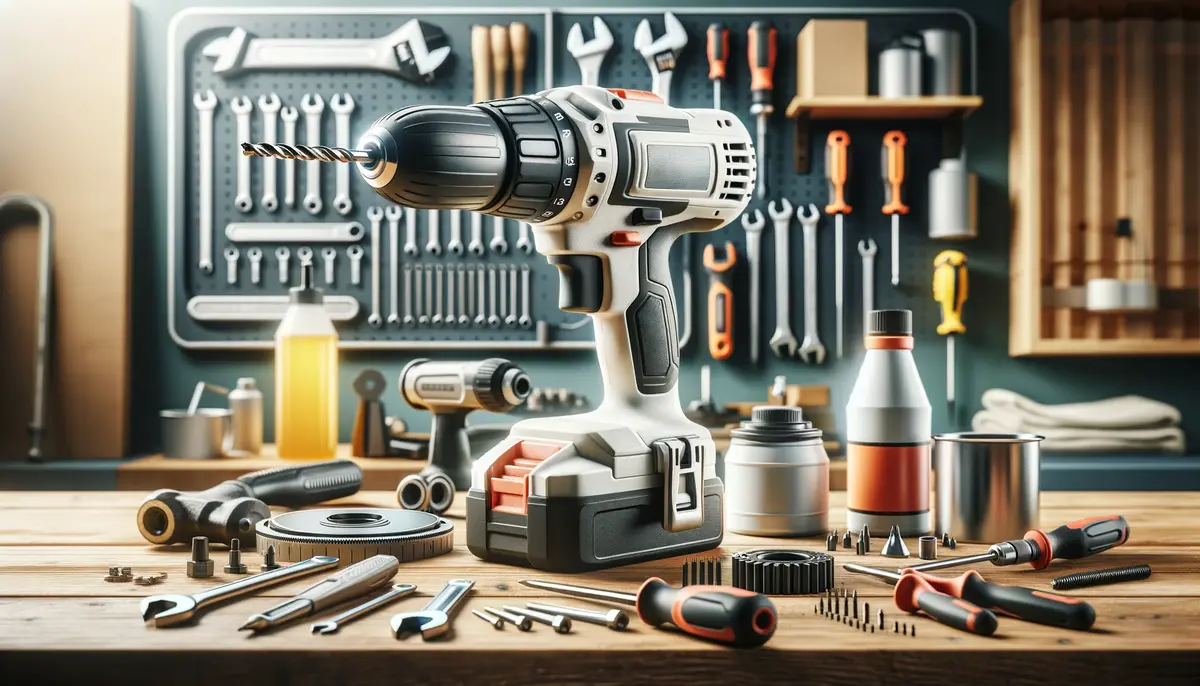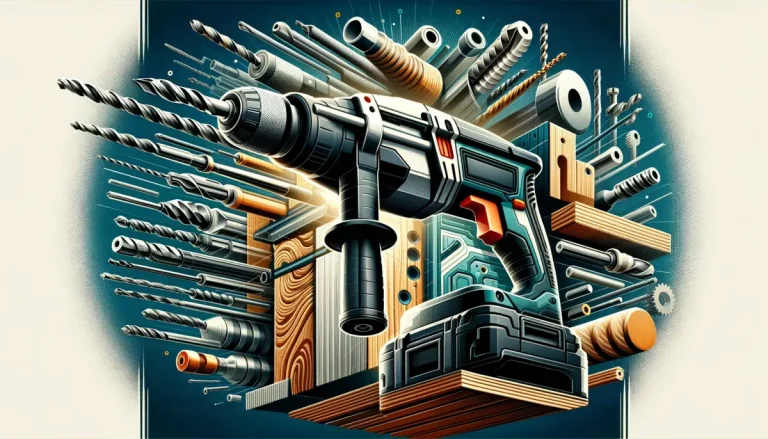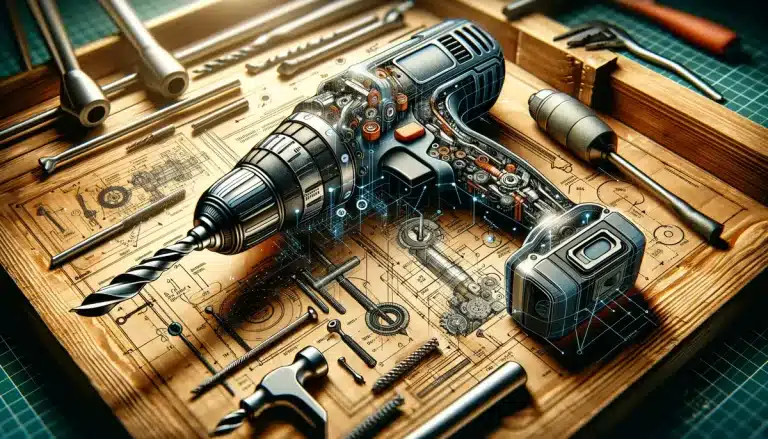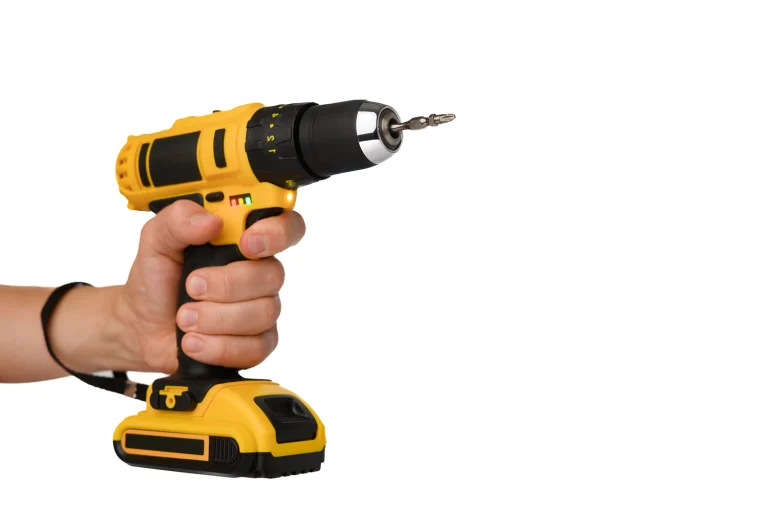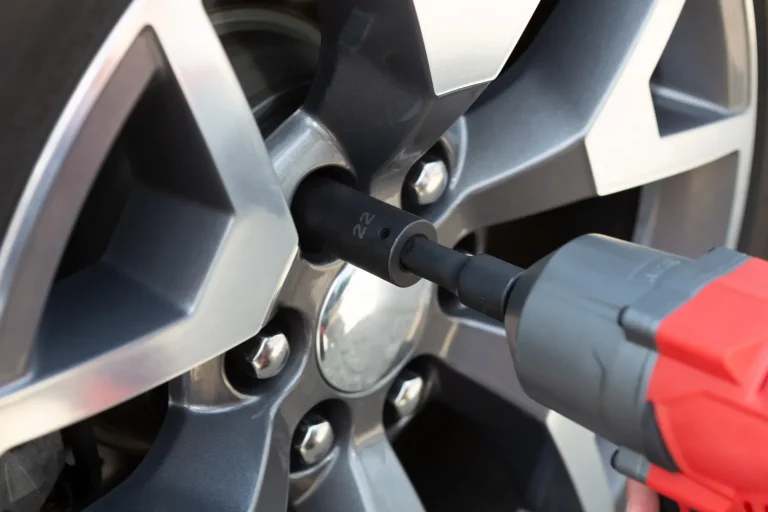Hammer Drill Maintenance: How to Keep It in Top Shape
When you use your hammer drill, think of it as a valuable tool, just like a chef does with a good knife set. It needs regular care to keep it working well.
This means not just cleaning it well after you use it, but also checking it often to make sure everything is working right. You should also know how to oil it correctly, take care of the drill bits, and replace them when needed. And don’t forget to store it in a place that’s good for it.
If you do all this, your hammer drill will last longer and work better. But if you don’t, it can break down and your work might suffer.
For example, when you’re done drilling, clear away any dust and debris from the tool. This prevents buildup that can harm the drill’s internal parts. Regularly inspect the cord, battery, and other parts for wear and tear. If you find an issue, fix it before it gets worse.
Use the right kind of oil for the parts that need it, and make sure to change the bits when they get dull or damaged – this not only makes your job easier but also prevents strain on the drill.
When storing, keep the hammer drill in a dry, clean place, away from extreme temperatures or dampness.
By following these steps, your hammer drill will be ready for action whenever you need it.
Effective Cleaning Process
To keep your hammer drill in top shape and make it last longer, it’s important to clean it after use. Dust and small bits can clog up the moving parts, like the air vents and the chuck, which can make your drill overheat or not run as smoothly.
So, here’s what you should do:
First, make sure your drill is turned off and unplugged, or if it’s a cordless one, take the battery out. This is just to make sure it doesn’t accidentally turn on while you’re cleaning it.
Then, take a can of compressed air and give a quick puff to blow the dust out of the vents. Do this in short, sharp blasts to make sure you’re getting the dust out and not blowing it back in.
Now, for the chuck where you put the drill bit, you’ll want to use a soft brush to gently sweep away any debris. After it’s nice and clean, put a couple of drops of machine oil on it. This not only makes the chuck move better when you’re changing bits, but it also stops rust from forming.
Remember to wear safety glasses while you do this to keep the dust out of your eyes. It might seem like a small thing, but keeping your drill clean like this can really make a difference. It’ll work better, and you won’t have to replace it as soon. Plus, it’s a quick and easy way to take care of your tools.
Regular Inspection Routines
To keep your hammer drill working well and safely, it’s important to regularly check it over. Look for any parts that are wearing out or broken, especially the chuck, gears, and brushes.
Make sure the power cord isn’t frayed or cracked, and that the plug’s prongs are straight and tight. Keep the air vents clear to stop the drill from getting too hot.
Check that the hammering part moves smoothly and that the drill bits are sharp and tightly fitted. It’s also important to check that the safety features, like the clutch and the extra handle, are working right.
Proper Lubrication Techniques
To make sure your hammer drill lasts a long time, you need to grease its moving parts properly, like the gearbox and the part where you insert the drill bit (the chuck). The gearbox especially needs a tough grease made for high-pressure situations because it gets really hot and has to deal with a lot of force when you’re drilling.
For the chuck, it’s better to use a thinner oil that’ll make swapping out drill bits easy and keep the drill working smoothly. But be careful – if you use too much lubricant, it’ll just attract dirt and cause damage faster. Always check the drill’s manual to see what kind of oil or grease it says to use and when to apply it.
By keeping your drill well-oiled, you’re not just doing routine care; you’re making sure it works well and doesn’t give you problems while you’re working.
It’s like how you’d take care of a car. You wouldn’t just fill it with any oil you found; you’d use the type the manufacturer recommends and change it when you’re supposed to. It’s the same with your drill. For example, you might use a grease like Mobilgrease XHP 222 for the gearbox because it’s made to handle the heat and pressure. And for the chuck, a light oil like 3-IN-ONE Multi-Purpose Oil would do the trick.
Remember to keep it all clean and you’ll have a drill that’s ready to go whenever you need it.
Bit Replacement and Care
Ensuring your hammer drill’s bits are sharp and of good quality is vital for the drill to work well and last longer. Here’s how to take care of your bits effectively:
Routine Checks
- Examine for signs of wear both before and after you use them.
- Look out for any bluntness or cracks.
Correct Storage
- Store your bits in a place that’s dry and tidy.
- Protect them with sleeves or containers to avoid rust.
When a bit isn’t cutting it anymore, it’s time for a new one. Worn-out bits make you push harder and can wear out your drill’s engine. Always choose bits that the maker of your drill suggests, as they’re made to handle the demands of hammer drilling. This attention to detail ensures you’re not risking your tool’s lifespan or the quality of your work.
For example, if you’re drilling into concrete, don’t just grab any bit; use a carbide-tipped bit specifically designed for masonry. It’ll make the job easier and help avoid unnecessary strain on your drill.
Optimal Storage Conditions
To keep your hammer drill working well for a long time, store it somewhere that’s not too hot or cold, doesn’t have much dampness or dust that could hurt its parts. You should be very careful about how you store it to keep it in good shape. Don’t just throw it in a closet; make sure it’s in the right spot to avoid damage.
To make sure your hammer drill stays in great shape, think about where you put it. A place that’s too warm or too cold, or too wet, can mess up the delicate parts inside. Aim for a space with temperatures from 40°F to 100°F and humidity under 50%. This helps prevent rust and keeps the electronics running smoothly. Avoid dusty areas to protect the drill’s insides, and store it in its own space so you can find it easily. Doing this will help your tool work better for longer and be ready whenever you need it.
Following these tips will help you avoid rust and problems with the electronics. Keep things neat and well-organized, and your hammer drill will last longer and be ready to use when you need it.
Frequently Asked Questions
Can Using a Hammer Drill at Different Speeds Affect Its Lifespan?
Absolutely, the speed at which you use your hammer drill can affect how long it lasts. It’s important to select the right speed for the job you’re doing. If you use a speed that’s too high for a light job, it can cause unnecessary stress on the drill’s motor and parts. For example, if you’re working with softwood, a lower speed will do the job without overworking the tool. On the other hand, if you’re drilling into concrete, a higher speed is necessary to get through the tough material but should be used cautiously to not strain the drill. This careful matching of speed to the task helps to make sure your hammer drill works well for a longer time.
Using the correct speed helps to prevent the drill from overheating and reduces the risk of wear and tear on its components. This means you won’t have to replace or repair it as often, saving you money and hassle. For instance, if you’re assembling furniture, you wouldn’t use the same speed as when you’re breaking up concrete for a renovation project. Also, using the right drill bit for the material and speed can make a big difference. High-quality bits, such as those from Bosch or DeWalt, are designed to complement your drill’s performance and can help extend its lifespan.
How Do Environmental Factors, Such as Humidity and Temperature, Impact the Longevity of a Hammer Drill?
Humidity and big changes in temperature can make your hammer drill rust and wear out faster. It’s important to keep it in a place where you can control these conditions to help it last longer. For example, storing your hammer drill in a dry, stable environment will prevent moisture from causing rust, while keeping it away from extreme heat or cold will stop the materials from weakening. Think of it like taking care of a car – you wouldn’t leave it out in a storm or a heatwave without protection. Use a sturdy case for storage, and consider using protective sprays or lubricants designed for power tools, like WD-40 or silicone spray, to protect your hammer drill from the elements. This way, you’ll ensure it stays in good working order for all your DIY projects or professional work.
Are There Any Specific Brands or Models of Hammer Drills Known for Their Extended Lifespans?
Some hammer drills are built to last longer, especially models like the Hilti TE 70-ATC. They’re made with strong materials and designed to handle a lot of use. When picking a hammer drill, it’s smart to look for ones that are known for their sturdiness. For example, the Hilti TE 70-ATC is a reliable choice because it combines solid construction with advanced features that help it last through tough jobs. If you need a hammer drill for frequent, heavy-duty work, going for a durable model like this can save you from having to replace it too soon.
How Does the Frequency of Use Influence the Wear and Tear on a Hammer Drill?
Using your hammer drill often can lead to it wearing down more quickly. To help it last longer, it’s important to take care of it by regularly checking and replacing parts if needed and using it the right way. For example, ensuring that you use the correct drill bit for the material you’re working on can prevent unnecessary strain on the drill. Also, things like cleaning the drill after use and storing it properly can make a big difference. When you maintain your drill well, you can confidently work on various projects without worrying about your tool failing. If you’re using it frequently for heavy-duty tasks, consider investing in a high-quality hammer drill designed for durability, such as the Bosch SDS-plus Bulldog Xtreme Rotary Hammer, known for its reliable performance.
Can Aftermarket Modifications or Accessories Enhance the Durability of a Hammer Drill?
Equipping your hammer drill with high-quality aftermarket accessories can make it last longer and perform better. This is because these parts can protect the drill from the usual damage it might get from heavy use. For example, a durable drill bit designed for heavy impact can reduce the stress on the drill’s motor and bearings. Also, using a protective case when the drill is not in use can prevent unnecessary scratches and dents. By carefully choosing and using these add-ons, you can keep your hammer drill in top shape, making it a reliable tool for all your projects. Remember to pick accessories that are compatible with your drill model for the best results.

